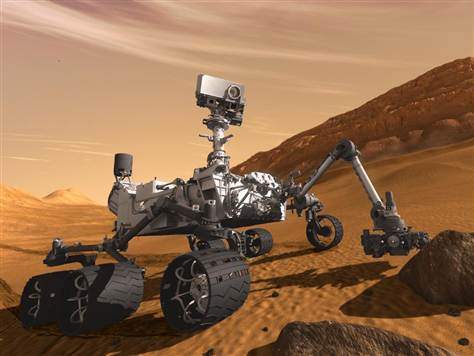NASA has confirmed that its Curiosity rover will depart for Mars on November 26 from Space Launch Complex-41 at Cape Canaveral Air Force Station, Florida.
The launch of the United Launch Alliance Atlas V carrying NASA’s Mars Science Laboratory (MSL) was delayed by one day so the space agency could remove and replace a flight termination system battery.

The one-ton Curiosity is slated to land on the Red Planet near the base of a layered mountain 3 miles (5 kilometers) high inside Gale crater.
The rover will investigate whether environmental conditions have ever been favorable for development of microbial life and preserved evidence of those conditions.
“Gale gives us a superb opportunity to test multiple potentially habitable environments and the context to understand a very long record of early environmental evolution of the planet,” said John Grotzinger, project scientist for the Mars Science Laboratory at the California Institute of Technology in Pasadena.
“The portion of the crater where Curiosity will land has an alluvial fan likely formed by water-carried sediments. Layers at the base of the mountain contain clays and sulfates, both known to form in water.”
Curiosity is twice as long and five times as heavy as earlier Mars rovers Spirit and Opportunity. It is equipped to carry a set of 10 science instruments weighing 15 times as much as its predecessors’ science payloads.

A mast extending to 7 feet (2.1 meters) above ground provides height for cameras and a laser-firing instrument to study targets from a distance, while instruments on a 7-foot-long (2.1-meter-long) arm will study targets up close.
Additional analytical instruments inside the rover will determine the composition of rock and soil samples acquired with the arm’s powdering drill and scoop. The rover will also analyze the environment, including weather and natural radiation that will affect future human missions.
Curiosity is currently scheduled to arrive at the Red Planet in August 2012 after an 8 1/2-month journey through our solar system.






